the pursuit of speed and efficiency. Vehicle aerodynamics plays a pivotal role in achieving these goals. It is the science of shaping vehicles to slice through the air with minimal resistance, improving fuel efficiency, stability, and overall performance. In this article, we’ll explore the fascinating world of vehicle aerodynamics, the strategies employed to reduce wind resistance, and the profound impact it has on modern vehicles.
The quest for speed and efficiency has been a driving force in the automotive industry, and vehicle aerodynamics is at the forefront of this pursuit. Beyond its role in enhancing fuel efficiency, stability, and performance, the science of vehicle aerodynamics has ushered in a new era of innovation and sustainability in modern vehicles:
Environmental Consciousness: In today’s era of heightened environmental awareness, vehicle manufacturers are under increasing pressure to reduce emissions and improve fuel economy. Aerodynamic design significantly contributes to these objectives by minimizing the drag forces that vehicles encounter while moving through the air. This translates into reduced fuel consumption and greenhouse gas emissions, aligning with global sustainability goals.
Electric Revolution: As electric vehicles (EVs) gain prominence, the importance of aerodynamics becomes even more pronounced. Since EVs rely solely on battery power, every effort to minimize energy consumption counts. Streamlined designs that cut through the air with minimal resistance are crucial for extending the driving range of electric vehicles, making them more practical for consumers.
Safety and Stability: Beyond fuel efficiency, vehicle aerodynamics directly impact safety and stability. Improved aerodynamic profiles help vehicles maintain better traction and control at high speeds. This is especially relevant for sports cars and performance vehicles, where aerodynamic enhancements enhance both safety and the overall driving experience.
Noise Reduction: Aerodynamics isn’t just about reducing drag; it also plays a role in reducing wind noise. Quieter vehicles offer a more comfortable and enjoyable ride, contributing to a higher level of customer satisfaction.
Materials and Manufacturing Innovations: Achieving optimal aerodynamics often involves innovative materials and manufacturing techniques. Lightweight materials like carbon fiber, advanced alloys, and precise manufacturing processes are employed to shape vehicles with precision, further contributing to fuel efficiency and performance.
Autonomous Vehicles: As autonomous vehicles become a reality, aerodynamics will continue to evolve. Streamlined designs and sensor integration are crucial for the efficient operation of autonomous systems, ensuring they can navigate safely and effectively.
Cross-Industry Impact: Vehicle aerodynamics isn’t limited to the automotive sector. Aerospace, wind energy, and transportation industries all benefit from aerodynamic research and design principles, highlighting the far-reaching impact of this field.
Continuous Evolution: Aerodynamic research is an ongoing endeavor, with engineers and designers continually pushing the boundaries of what’s possible. As computational simulations and wind tunnel testing become more sophisticated, new design strategies emerge, shaping the vehicles of the future.
In conclusion, vehicle aerodynamics is far more than a means to achieve speed and efficiency; it’s a cornerstone of modern vehicle design, impacting sustainability, safety, and overall performance. As the automotive industry continues to evolve, so too will the science of aerodynamics, driving innovation and shaping the vehicles of tomorrow.
For additional details, consider exploring the related content available here Aerodynamics Research Revolutionizes Truck Design | NASA Spinoff
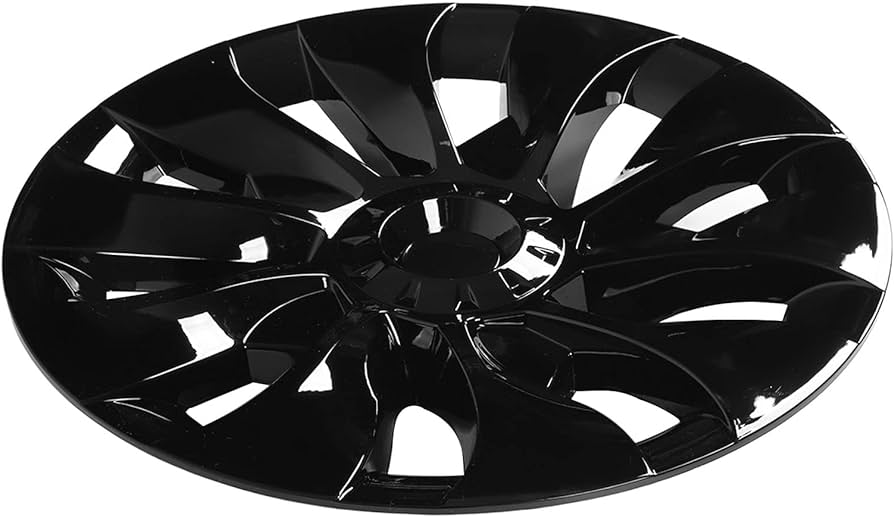
At its core, aerodynamics is the study of how air flows over and around objects. When it comes to vehicles, particularly automobiles, the goal is to minimize aerodynamic drag. This drag, also known as wind resistance or air resistance, is the force that opposes the motion of the vehicle as it moves through the air. Reducing this drag leads to several significant advantages:
At its core, aerodynamics is the study of how air flows over and around objects. When it comes to vehicles, particularly automobiles, the goal is to minimize aerodynamic drag. This drag, also known as wind resistance or air resistance, is the force that opposes the motion of the vehicle as it moves through the air. Reducing this drag leads to several significant advantages:
Improved Fuel Efficiency: One of the most compelling advantages of reducing aerodynamic drag is improved fuel efficiency. When a vehicle encounters less resistance from the air, it requires less energy to maintain a certain speed. As a result, it burns less fuel, saving money for vehicle owners and reducing greenhouse gas emissions.
Extended Electric Vehicle Range: In the context of electric vehicles (EVs), reducing aerodynamic drag is crucial for extending their range. Since EVs rely solely on stored electrical energy, optimizing aerodynamics allows them to maximize their efficiency and cover longer distances on a single charge. This is especially important for addressing range anxiety and promoting EV adoption.
Enhanced Handling and Stability: Reducing aerodynamic drag not only improves straight-line efficiency but also contributes to better handling and stability. Vehicles with lower drag coefficients are less susceptible to crosswinds and turbulence, providing a safer and more predictable driving experience.
Reduced Wind Noise: Enhanced aerodynamics often result in reduced wind noise inside the vehicle cabin. This quieter interior makes for a more comfortable and enjoyable driving environment, particularly during highway cruising.
Eco-Friendly Image: Automakers that prioritize aerodynamic design send a clear message about their commitment to eco-friendly practices. Such a focus on sustainability can enhance a company’s image and reputation among environmentally conscious consumers.
Compliance with Emission Standards: In an era of stringent emissions regulations, automakers are under pressure to improve the efficiency of their vehicles. Reducing aerodynamic drag is one way to achieve this, helping manufacturers meet emission standards and avoid penalties.
High-Performance Benefits: While fuel efficiency is a primary concern for most vehicles, the principles of aerodynamics are equally relevant in high-performance cars. Lower drag coefficients can result in higher top speeds and improved acceleration, appealing to enthusiasts and sports car aficionados.
Cross-Industry Applications: The insights gained from vehicle aerodynamics find applications in other industries, such as aviation and aerospace. Innovations in aerodynamics in one sector often translate into advancements that benefit multiple industries.
Safety: Minimizing aerodynamic drag can also enhance safety by reducing the risk of hydroplaning on wet roads and improving tire grip. This is particularly relevant in adverse weather conditions.
In conclusion, the pursuit of reduced aerodynamic drag is at the forefront of automotive engineering and design. It not only leads to tangible benefits like improved fuel efficiency and extended EV range but also contributes to a safer and more comfortable driving experience. As automakers continue to refine their aerodynamic designs, the advantages of reduced drag will become even more apparent in the vehicles of tomorrow.
For a comprehensive look at this subject, we invite you to read more on this dedicated page: Aerodynamic Drag – an overview | ScienceDirect Topics
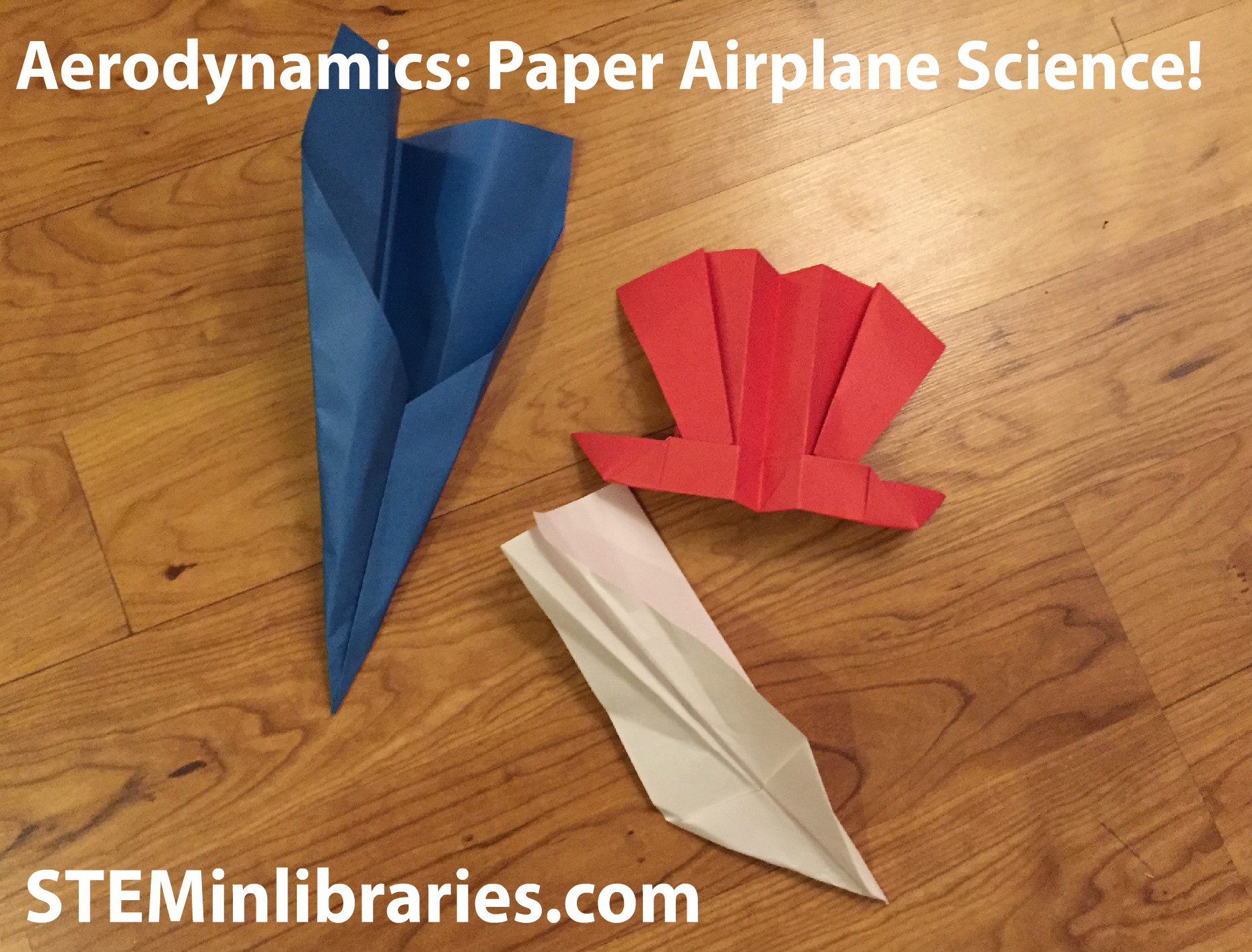
One of the most immediate benefits of improved aerodynamics is increased fuel efficiency. A vehicle with lower wind resistance requires less energy to maintain a given speed, resulting in better mileage. This is especially crucial in today’s world, where fuel economy standards are increasingly stringent.
The pursuit of increased fuel efficiency through improved aerodynamics is not merely a luxury but a necessity in our modern world. As global concerns about climate change and environmental sustainability intensify, governments and regulatory bodies are imposing increasingly stringent fuel economy standards on the automotive industry. In this context, the role of aerodynamics in achieving better mileage has never been more crucial.
Meeting Regulatory Requirements: Stringent fuel economy standards are being imposed by governments worldwide to reduce greenhouse gas emissions and combat climate change. Vehicle manufacturers are under pressure to meet these requirements, and one of the most effective ways to do so is by enhancing aerodynamic performance. A more aerodynamically efficient vehicle requires less fuel to overcome air resistance, contributing to compliance with these standards.
Consumer Expectations: Beyond regulatory mandates, consumer expectations also drive the quest for improved fuel efficiency. In a world where environmental consciousness is on the rise, consumers are actively seeking vehicles that not only perform well but also have a reduced carbon footprint. Automakers that prioritize aerodynamics and, consequently, better fuel economy are better positioned to meet these evolving consumer demands.
Cost Savings: Improved fuel efficiency directly translates into cost savings for consumers. As fuel prices fluctuate, drivers are increasingly mindful of their fuel expenses. A vehicle with enhanced aerodynamics can substantially reduce the frequency and cost of refueling, providing a clear financial benefit to the owner.
Range Extension for Electric Vehicles: In the era of electric vehicles (EVs), aerodynamics play a critical role in extending the driving range. An aerodynamically efficient EV encounters less wind resistance, which translates into longer journeys on a single charge. This directly addresses one of the primary concerns of EV adopters: range anxiety.
Performance Enhancement: Enhanced aerodynamics not only contribute to fuel efficiency but also to overall vehicle performance. The reduced wind resistance allows vehicles to reach higher speeds more easily and maintain stability at those speeds. This performance boost is particularly relevant for sports cars and high-performance vehicles.
Competitive Advantage: In the highly competitive automotive market, a vehicle’s fuel efficiency and environmental credentials can serve as a potent differentiator. Manufacturers that invest in aerodynamic design and promote the resulting fuel efficiency can gain a competitive edge, attracting eco-conscious consumers and staying ahead of the regulatory curve.
In conclusion, the benefits of improved vehicle aerodynamics extend far beyond mere fuel efficiency. They touch upon critical aspects of the automotive industry, including regulatory compliance, consumer preferences, cost savings, and the performance of both conventional and electric vehicles. As we navigate an era of rapid environmental change and evolving mobility needs, the role of aerodynamics in enhancing fuel economy stands as a pivotal factor in shaping the vehicles of tomorrow. It is a journey that not only embraces innovation but also aligns with the collective goal of creating a more sustainable and efficient automotive landscape for the benefit of all.
You can also read more about this here: Fuel Economy in Hot Weather | Department of Energy

Effective aerodynamic design enhances a vehicle’s stability and handling. Reduced wind resistance means less lift, which can improve traction and control, particularly at higher speeds.
Effective aerodynamic design stands as a cornerstone of vehicle engineering, with far-reaching implications for safety, performance, and fuel efficiency. Beyond the basic principles of reducing wind resistance and minimizing lift, it contributes to a holistic transformation of the driving experience. Here’s an extended exploration of how effective aerodynamics enhances vehicle stability and handling:
Stability at High Speeds: Aerodynamic design is especially critical at higher speeds. When a vehicle moves rapidly through the air, turbulence and drag can destabilize it. Effective aerodynamics, through streamlined shapes and careful airflow management, helps maintain stability. Reduced wind resistance allows the vehicle to stay planted on the road, reducing the risk of accidents, especially during highway driving.
Improved Fuel Efficiency: One of the most immediate benefits of aerodynamic design is enhanced fuel efficiency. When a vehicle encounters less resistance from the air, it requires less energy to maintain a constant speed. This means that the engine can operate more efficiently, leading to reduced fuel consumption and lower greenhouse gas emissions. In an era of growing environmental consciousness, improved fuel efficiency is a win-win for both drivers and the planet.
Enhanced Traction and Control: Minimizing lift is a pivotal aspect of aerodynamic design. Lift occurs when air pressure imbalances between the upper and lower surfaces of the vehicle create an upward force. This can lead to reduced traction on the road, especially at high speeds or during abrupt maneuvers. Effective aerodynamics counteracts lift, improving tire contact with the road surface and enhancing overall control.
Reduced Noise and Vibration: Aerodynamic improvements often lead to quieter and more comfortable driving experiences. Smooth airflow around the vehicle reduces wind noise, creating a more pleasant environment for passengers. Reduced turbulence also translates into less vibration, contributing to a smoother ride and minimizing driver fatigue on long journeys.
Enhanced Safety: Aerodynamic design not only improves vehicle stability but also contributes to safety. Stable vehicles are less prone to rollovers and skidding, which are common causes of accidents. In adverse weather conditions, such as strong crosswinds, effective aerodynamics helps keep the vehicle on its intended path, reducing the risk of accidents.
Braking Efficiency: Effective aerodynamics can also enhance braking efficiency. A streamlined vehicle encounters less wind resistance when decelerating, allowing the brakes to work more effectively. This can lead to shorter stopping distances, particularly in emergency situations.
Crosswind Stability: Crosswinds can pose a significant challenge for drivers, especially when driving high-profile vehicles like trucks and SUVs. Aerodynamic improvements help mitigate the impact of crosswinds by minimizing lateral forces on the vehicle, improving overall stability, and reducing driver effort required to maintain control.
Aesthetic Appeal: Aerodynamic design often results in sleek, elegant vehicle shapes. Aesthetic appeal is a crucial factor in consumer preferences, and manufacturers leverage aerodynamics to create visually appealing vehicles that stand out in the market. Attractive design can positively influence a vehicle’s perceived value and desirability.
Eco-friendly Design: Beyond fuel efficiency, effective aerodynamics aligns with eco-friendly design principles. Vehicles with reduced drag and improved stability are typically more environmentally responsible, as they consume fewer resources and produce fewer emissions over their lifetime.
In summary, effective aerodynamic design is a multi-faceted engineering endeavor that goes well beyond reducing drag. It enhances vehicle stability, safety, and control, leading to improved fuel efficiency, comfort, and overall driving experience. As automotive engineers continue to innovate in the field of aerodynamics, we can expect vehicles to become even more stable, efficient, and environmentally friendly, setting new standards for the future of mobility.
To expand your knowledge on this subject, make sure to read on at this location: Aerodynamic:Performance Parts|STI

Improved aerodynamics can also lead to reduced wind noise inside the vehicle. Quieter rides enhance passenger comfort, making long journeys more enjoyable.
Enhanced aerodynamics not only contribute to improved fuel efficiency and reduced drag but also play a significant role in minimizing wind noise within the vehicle’s cabin. The reduction in wind noise is a silent yet impactful improvement that goes beyond mere numbers and statistics; it directly enhances the overall driving experience and passenger comfort.
Noise Reduction for a Quieter Ride: Wind noise can be a persistent annoyance during travel, especially at high speeds on highways. However, with meticulous attention to aerodynamic design, engineers can curtail the turbulence that leads to excessive noise. By streamlining the vehicle’s shape, optimizing side mirror placement, and minimizing gaps or disruptions in the airflow, designers create an environment inside the car that is noticeably quieter.
Passenger Comfort: A quieter cabin translates into a more serene and comfortable atmosphere for passengers and drivers alike. Reduced wind noise allows for clearer conversations, more enjoyable music or entertainment, and a peaceful ambiance that is conducive to relaxation. Long journeys become less tiring, as passengers are less fatigued by continuous noise exposure.
Enhanced Vehicle Appeal: Beyond the practical benefits, a quieter ride also contributes to the overall appeal of a vehicle. It can be a significant selling point for consumers seeking a premium and refined driving experience. A serene cabin can elevate a vehicle’s perceived quality and comfort, influencing purchasing decisions.
Urban Mobility and Electric Vehicles: In urban environments, where traffic congestion is common, the importance of a quiet cabin cannot be overstated. Electric vehicles (EVs), known for their near-silent electric propulsion, can benefit even more from advanced aerodynamics. When combined with effective sound insulation, EVs can offer an exceptionally tranquil ride, making them an appealing choice for urban commuters.
Sustainable Transportation: The pursuit of improved aerodynamics also aligns with sustainability goals. Reduced wind resistance leads to better fuel efficiency, contributing to lower greenhouse gas emissions. In this way, the quest for quieter and more aerodynamic vehicles harmonizes with the broader effort to make transportation cleaner and more environmentally friendly.
In conclusion, the impact of improved aerodynamics extends beyond just fuel efficiency and environmental benefits. It directly enhances the comfort and pleasure of the driving experience by reducing wind noise inside the cabin. This demonstrates how advancements in technology not only serve practical purposes but also cater to the holistic well-being and satisfaction of passengers and drivers, ultimately redefining what a truly enjoyable journey can be.
Looking for more insights? You’ll find them right here in our extended coverage: 2013 Chevrolet Malibu is No Drag in Aerodynamics
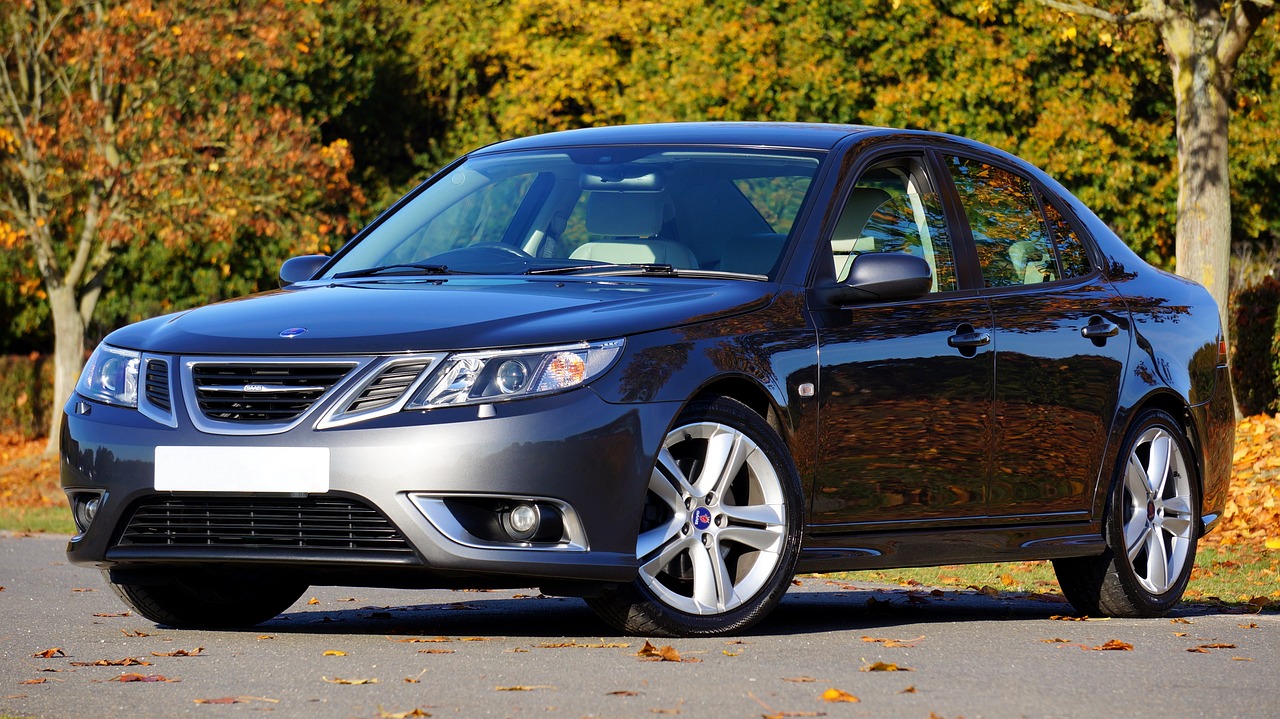
Lower wind resistance results in lower fuel consumption and, consequently, reduced greenhouse gas emissions. This aligns with the automotive industry’s commitment to environmental sustainability.
Lower wind resistance results in lower fuel consumption and, consequently, reduced greenhouse gas emissions. This aligns with the automotive industry’s commitment to environmental sustainability, a commitment that extends far beyond aerodynamics and encompasses various facets of vehicle design and operation.
Efficient Powertrains: Besides reducing wind resistance, automakers are continually improving powertrain efficiency. Advanced engine technologies, hybridization, and electrification all contribute to lower fuel consumption and emissions. The development of more efficient transmission systems and lightweight materials also plays a crucial role in optimizing fuel efficiency.
Eco-Friendly Materials: The shift toward sustainable materials is transforming vehicle interiors and exteriors. Automakers are increasingly using recycled, renewable, and environmentally friendly materials in their designs. This reduces the environmental impact of manufacturing and promotes responsible sourcing.
Battery Technology: The electric vehicle (EV) revolution is a testament to the industry’s commitment to sustainability. Electric cars produce zero tailpipe emissions and are becoming more accessible due to advancements in battery technology. Innovations in energy density, charging infrastructure, and recycling methods are further driving the adoption of EVs.
Reduced Carbon Footprint: Beyond the vehicle itself, the industry is making strides in reducing the carbon footprint of the entire manufacturing process. Sustainable manufacturing practices, such as zero-waste initiatives, energy-efficient facilities, and minimized water usage, are becoming standard practices.
Smart Mobility Solutions: Automakers are investing in smart mobility solutions, including ride-sharing, car-sharing, and autonomous vehicles. These innovations promote efficient vehicle use and reduce the overall number of vehicles on the road, thus decreasing congestion and emissions in urban areas.
Regulatory Compliance: Government regulations and emissions standards are pushing automakers to develop cleaner and more efficient vehicles. These regulations incentivize research and development in technologies that reduce emissions and improve overall environmental performance.
Consumer Demand: As environmental awareness grows, consumers are increasingly prioritizing eco-friendly options. This demand is pushing automakers to invest in sustainable practices and develop greener vehicles, ensuring a competitive edge in the market.
Collaborative Efforts: The automotive industry is actively collaborating with other sectors, including energy, technology, and infrastructure, to create integrated solutions for sustainable mobility. Initiatives like electrified transportation systems and renewable energy integration are changing the way we think about transportation.
In essence, the automotive industry’s commitment to environmental sustainability goes beyond individual vehicles; it encompasses the entire ecosystem of mobility. As the industry continues to innovate and adapt to evolving environmental challenges, it not only reduces its environmental footprint but also leads the way in shaping a cleaner, more sustainable future for transportation. This commitment not only benefits the planet but also aligns with the changing expectations and values of consumers who seek responsible and eco-conscious choices in their mobility solutions.
Looking for more insights? You’ll find them right here in our extended coverage: Vehicle Parts and Equipment to … – Alternative Fuels Data Center

Achieving optimal aerodynamics involves careful design and engineering. Automotive manufacturers employ various strategies to minimize wind resistance:
Achieving optimal aerodynamics in vehicle design is a multifaceted endeavor that demands meticulous attention to detail and innovative engineering solutions. Automotive manufacturers employ a wide array of strategies and techniques to minimize wind resistance, not only to enhance vehicle performance but also to improve fuel efficiency, reduce emissions, and create a more comfortable and quieter driving experience. These strategies include:
Streamlined Body Shapes: The vehicle’s outer contour is designed with precision to reduce drag. Streamlined shapes and smooth curves help air flow more smoothly over the vehicle, minimizing turbulence and reducing resistance.
Underbody Panels: Many modern vehicles are equipped with underbody panels or shields to cover and protect the undercarriage. These panels serve to direct airflow efficiently, reducing drag and improving fuel economy.
Active Aero Features: Some vehicles incorporate active aerodynamic features that can adjust in real-time to optimize airflow. Examples include adjustable spoilers, flaps, and even grille shutters that open or close as needed to balance cooling and aerodynamic efficiency.
Side Mirrors and Door Seals: Design changes like smaller side mirrors and improved door seals help reduce wind noise and turbulence, contributing to a quieter and more comfortable ride.
Tire Design: Tire manufacturers play a role in enhancing aerodynamics by designing tires with low rolling resistance. Reduced rolling resistance translates to less energy required to move the vehicle, ultimately improving fuel efficiency.
Wheel Design: Wheel design is another aspect considered for aerodynamics. Wheels with aero-efficient designs, such as streamlined spokes, contribute to lower drag and better efficiency.
Cabin Ventilation and Airflow Management: Engineers optimize cabin ventilation systems to minimize wind noise and maintain a comfortable interior environment. Ventilation ducts and airflow management within the vehicle are carefully designed to achieve this balance.
Testing and Simulation: Advanced computational fluid dynamics (CFD) simulations and wind tunnel testing play a crucial role in the design and validation of aerodynamic improvements. These tools allow manufacturers to fine-tune vehicle shapes and features for optimal performance.
Material Selection: Lightweight materials, such as carbon fiber or aluminum, can be strategically used in vehicle construction to reduce overall weight, which in turn enhances efficiency and performance.
Advanced Coatings: Some manufacturers employ special coatings that reduce surface friction and improve aerodynamics. These coatings can be applied to the vehicle’s exterior surfaces to minimize the impact of airflow.
Electric and Autonomous Vehicles: Electric vehicles (EVs) and autonomous vehicles present unique opportunities for aerodynamic optimization. With fewer traditional components (like engine grilles and exhaust systems), designers have more flexibility to craft streamlined and aerodynamically efficient exteriors.
In summary, achieving optimal aerodynamics is a complex and continuous effort that blends design ingenuity with advanced engineering and technology. As automotive manufacturers strive to meet ever-stringent efficiency and emissions standards, aerodynamic enhancements remain a fundamental cornerstone in the pursuit of more sustainable and eco-friendly transportation solutions.
Additionally, you can find further information on this topic by visiting this page: Vehicle Parts and Equipment to … – Alternative Fuels Data Center
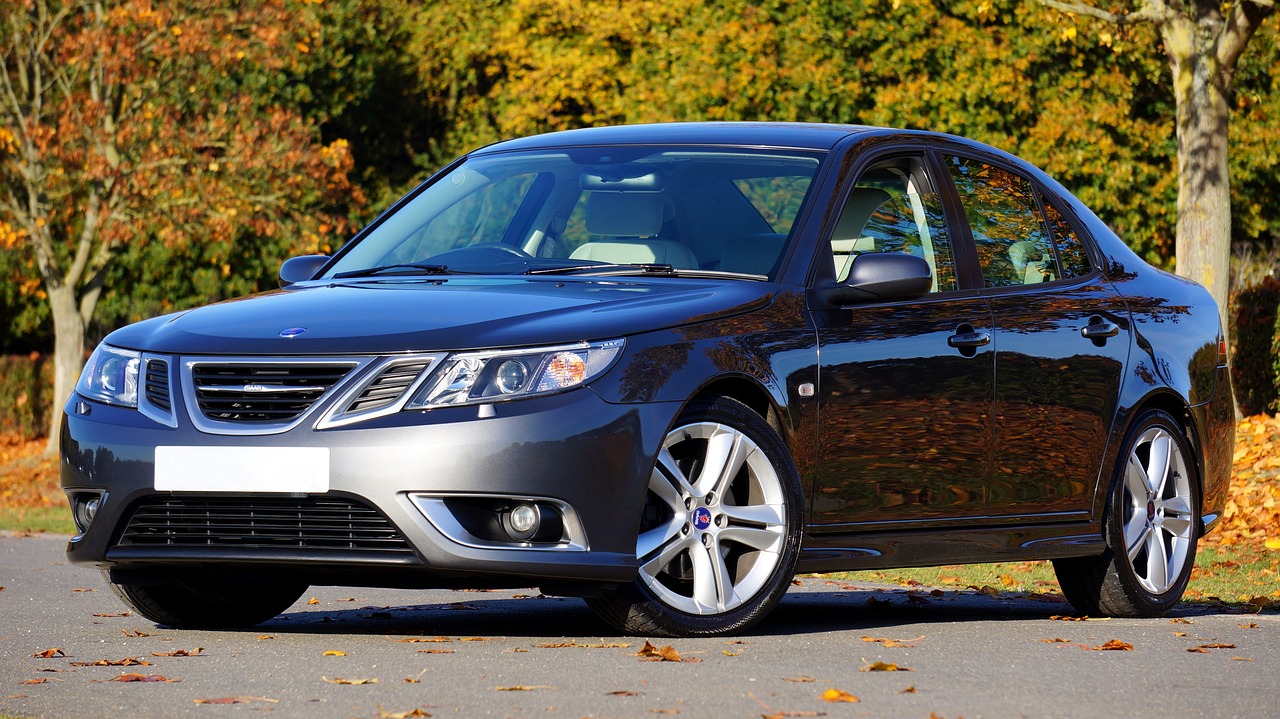
Vehicles are meticulously sculpted to reduce air resistance. Rounded contours, tapered rear ends, and carefully positioned spoilers and air dams all contribute to smoother airflow.
The art of designing vehicles to minimize air resistance, also known as aerodynamics, is a science that continually evolves, driven by the pursuit of greater fuel efficiency and reduced emissions. This endeavor involves a range of intricate techniques and innovations:
Streamlined Shapes: Vehicle designers meticulously shape every aspect of the car’s exterior to promote smooth airflow. From the gentle curves on the hood to the slope of the windshield and roofline, every contour is optimized to minimize air resistance. These streamlined shapes not only enhance fuel efficiency but also improve handling and reduce wind noise.
Tapered Rear Ends: Tapered rear ends, often referred to as the “Kammback” design, are a hallmark of aerodynamic vehicles. This design choice reduces the turbulence created in the wake of the vehicle, diminishing the drag force and enhancing overall efficiency. It’s particularly prevalent in hatchbacks and sedans.
Active Aerodynamics: Some modern vehicles feature active aerodynamic elements that can adapt to different driving conditions. For example, adjustable spoilers or flaps may automatically deploy at higher speeds to enhance downforce and stability, then retract at lower speeds to reduce drag.
Underbody Panels: Vehicles are equipped with underbody panels that help streamline airflow beneath the vehicle. These panels reduce turbulence and drag while also protecting sensitive components. Some electric vehicles leverage underbody panels to optimize battery cooling and airflow management.
Air Curtains: Air curtains are innovative aerodynamic features that direct air along the sides of the vehicle, reducing turbulence in the wheel wells. This minimizes drag and contributes to improved fuel efficiency.
Efficient Grille Design: Vehicle grilles are carefully designed to balance the need for engine cooling with aerodynamic efficiency. Active grille shutters, which can open or close based on cooling requirements, are an example of how this balance is achieved.
Rear Diffusers: Rear diffusers are aerodynamic devices placed on the underside of the vehicle’s rear end. They help accelerate the air as it exits from beneath the car, reducing pressure and lift. This enhances stability and reduces drag.
Computational Fluid Dynamics (CFD): Engineers employ advanced simulation techniques like CFD to digitally model and analyze airflow around the vehicle. This enables them to make precise adjustments to optimize aerodynamics before physical prototypes are built.
Wind Tunnel Testing: Physical wind tunnel testing remains a crucial part of vehicle development. It allows engineers to validate their designs and make fine-tuned adjustments for maximum aerodynamic efficiency.
Eco-Tires: Even the design of the tires can influence aerodynamics. Eco-tires feature tread patterns that reduce rolling resistance, which contributes to improved fuel economy.
Noise Reduction: Smoother airflow also results in reduced wind noise, contributing to a quieter and more comfortable driving experience.
In summary, the art of aerodynamic design in vehicles is a meticulous and multidisciplinary endeavor. It combines engineering, materials science, computer modeling, and real-world testing to create vehicles that are not only more fuel-efficient but also safer, more stable, and quieter. As the automotive industry continues to innovate, we can expect even more sophisticated techniques and materials to further refine vehicle aerodynamics and promote sustainability.
Should you desire more in-depth information, it’s available for your perusal on this page: Causes of aerodynamic drag — Science Learning Hub

Covering the vehicle’s underbody with shields or panels minimizes turbulence underneath the vehicle. This not only reduces drag but also improves vehicle stability.
The practice of covering a vehicle’s underbody with shields or panels is a simple yet ingenious technique that has profound implications for vehicle performance and efficiency. Let’s delve deeper into this concept and explore how it goes beyond reducing drag and enhancing stability:
Noise Reduction: In addition to reducing drag and enhancing stability, underbody shields contribute to a quieter ride. By minimizing air turbulence and reducing wind noise underneath the vehicle, passengers can enjoy a more serene and comfortable driving experience. This is especially appreciated in luxury vehicles and electric cars, where interior noise levels are a key consideration.
Improved Off-Road Capabilities: Underbody shields are not limited to standard road vehicles; they also play a vital role in off-road and adventure vehicles. These shields protect the undercarriage from damage when driving over rough terrain or rocky surfaces. In off-road applications, they are often reinforced to withstand impact and provide crucial protection to sensitive components like the engine and transmission.
Enhanced Safety: The use of underbody shields can enhance vehicle safety by protecting critical components. In the event of debris on the road or encounters with road hazards, shields can prevent damage to fuel lines, brake systems, and other vital parts. This, in turn, reduces the risk of accidents caused by sudden mechanical failures.
Extended Vehicle Lifespan: By safeguarding the vehicle’s underbelly from road debris, water, and other environmental factors, underbody shields can contribute to the longevity of the vehicle. Reduced exposure to corrosion and wear and tear on components like exhaust systems and suspension parts can extend the vehicle’s lifespan, ultimately providing greater value to the owner.
Efficiency Beyond Fuel Economy: While underbody shields undoubtedly enhance fuel economy by reducing drag, they also contribute to the overall efficiency of the vehicle. Improved aerodynamics can lead to a more efficient cooling system, reduced engine workload, and even better tire wear patterns, all of which play a role in optimizing vehicle performance and efficiency.
Design Integration: Underbody shields are increasingly integrated into vehicle designs, showcasing the industry’s commitment to combining functionality with aesthetics. Automakers are finding creative ways to incorporate these shields seamlessly into vehicle styling, ensuring that efficiency and design aesthetics go hand in hand.
Environmental Impact: Reduced drag and improved fuel efficiency resulting from underbody shields have a positive environmental impact. Lower fuel consumption means fewer emissions, contributing to efforts to reduce air pollution and combat climate change.
Customization and Personalization: For enthusiasts and aftermarket enthusiasts, underbody shields provide opportunities for customization. Different materials and designs can be chosen to enhance the vehicle’s aesthetics, all while retaining the functional benefits of reduced drag and improved protection.
In summary, underbody shields are a multifaceted solution that goes well beyond reducing drag and enhancing stability. They contribute to vehicle comfort, safety, longevity, and environmental responsibility while offering opportunities for design innovation and personalization. As automotive technology continues to evolve, underbody shields will remain a valuable tool for optimizing vehicle performance and efficiency.
For a comprehensive look at this subject, we invite you to read more on this dedicated page: Engine splash shield – aerodynamics and underbody protection …

Many modern vehicles feature sleek, retractable side mirrors and flush door handles that reduce wind resistance when not in use.
Many modern vehicles are incorporating innovative design elements to enhance aerodynamics and improve efficiency. Among these features, sleek, retractable side mirrors and flush door handles stand out as prime examples of how automotive engineering is focused on reducing wind resistance when these components are not in use.
Retractable Side Mirrors: These side mirrors are designed to fold in when the vehicle is parked or traveling at higher speeds. By reducing the side profile exposed to the oncoming air, they help minimize aerodynamic drag. This not only enhances fuel efficiency but also reduces wind noise, contributing to a quieter and more comfortable cabin environment.
Flush Door Handles: Flush door handles are another innovation aimed at streamlining the vehicle’s exterior. When not in use, these handles retract into the body of the car, presenting a smooth and uninterrupted surface. This design minimizes turbulence and drag, particularly around the door area. It’s a subtle yet effective way to improve aerodynamics without compromising aesthetics.
Integration with Vehicle Design: These aerodynamic features are not merely functional but are integrated seamlessly into the overall design of the vehicle. They exemplify the marriage of form and function in modern automotive engineering. Such integration showcases automakers’ dedication to both aesthetics and performance.
User-Friendly Technology: Retractable side mirrors and flush door handles are often equipped with user-friendly technology. They can automatically extend and retract based on the vehicle’s speed, driver preferences, or parking mode. This automation ensures a hassle-free experience for drivers and passengers.
Enhancing Electric Vehicles: These aerodynamic improvements hold particular significance for electric vehicles (EVs). Since EVs are highly sensitive to aerodynamic drag due to their reliance on battery power, every effort to reduce resistance contributes to extending their range and increasing overall efficiency.
Regulatory Compliance: Automakers are increasingly driven by stringent fuel efficiency and emissions regulations. Features like retractable side mirrors and flush door handles play a part in helping manufacturers meet these standards. As regulatory pressures mount, these design elements become even more relevant.
Innovations in Materials: The development of lightweight and durable materials plays a role in enabling these design features. Advanced materials ensure that retractable mirrors and flush handles can withstand the rigors of daily use while remaining lightweight to minimize their impact on overall vehicle weight.
Future Design Trends: These features also hint at the direction of future automotive design trends. As manufacturers continue to prioritize efficiency and sustainability, we can expect to see more innovations that reduce aerodynamic drag, further improving the overall performance and environmental impact of vehicles.
In conclusion, the integration of sleek, retractable side mirrors and flush door handles exemplifies the automotive industry’s commitment to enhancing aerodynamics and efficiency. These design elements not only contribute to better fuel economy but also underscore the importance of harmonizing aesthetics with functionality. As automotive technology evolves, we can anticipate more ingenious solutions that improve performance while reducing the environmental footprint of vehicles.
Looking for more insights? You’ll find them right here in our extended coverage: Optimization of wind resistance in commercial vehicles with …
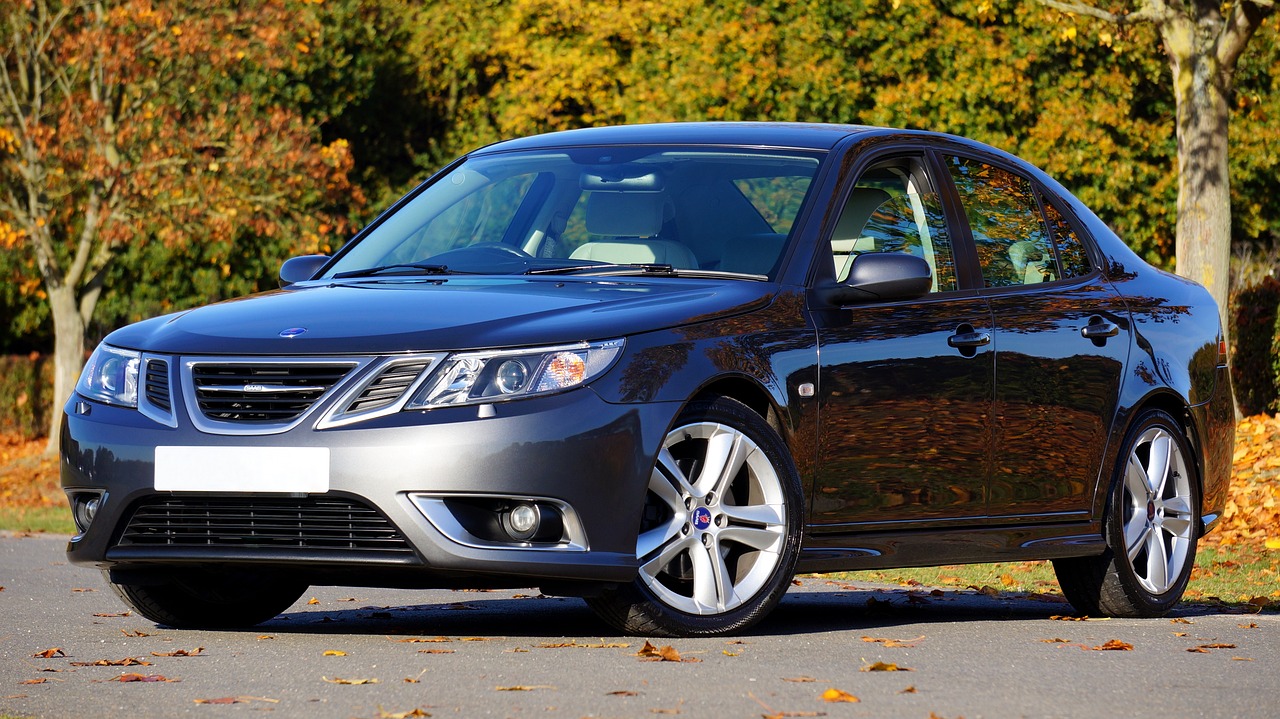
Some vehicles are equipped with grille shutters that automatically close when extra engine cooling isn’t needed. This reduces the air entering the engine compartment, improving aerodynamics.
The integration of grille shutters into modern vehicles represents a sophisticated approach to aerodynamics and efficiency. These innovative features are part of the broader strategy to optimize a vehicle’s performance in various driving conditions. Here, we delve deeper into the significance of grille shutters in enhancing aerodynamics and efficiency:
Adaptive Aerodynamics: Grille shutters are a prime example of adaptive aerodynamics. They respond dynamically to changing conditions, opening and closing as needed to strike a balance between engine cooling and reduced wind resistance. When the engine doesn’t require additional cooling, such as during highway cruising or mild weather, the shutters close, directing airflow around the vehicle rather than through the grille. This minimizes drag and improves fuel efficiency.
Fuel Efficiency Gains: The ability to control the airflow through the grille directly impacts fuel efficiency. When the grille shutters close, the vehicle experiences less aerodynamic drag, allowing it to move more effortlessly through the air. This reduction in resistance translates into fuel savings, as the engine expends less energy to overcome wind resistance. In an era where fuel economy is a top priority, every small improvement matters.
Enhanced Engine Performance: Grille shutters also contribute to engine performance. By maintaining an optimal operating temperature, the engine can function more efficiently. This is especially important for modern engines with complex systems that rely on precise temperature control for optimal combustion. With grille shutters regulating the airflow, the engine can operate at its peak efficiency, delivering better power output and responsiveness.
Environmental Impact: The reduced wind resistance achieved through grille shutters is not just about fuel efficiency; it’s also about environmental impact. Lower fuel consumption leads to reduced greenhouse gas emissions, aligning with global efforts to combat climate change. This eco-friendly approach to vehicle design is gaining prominence as automakers strive to meet stringent emissions standards and reduce their carbon footprint.
Noise Reduction: Grille shutters can also contribute to a quieter driving experience. When closed, they block the entry of wind and road noise into the engine compartment, resulting in a more peaceful cabin environment. This noise reduction enhances passenger comfort, making long journeys more enjoyable.
Integration with Vehicle Systems: Grille shutter systems are often integrated with a vehicle’s broader ecosystem of sensors and controls. They can respond to real-time data, such as engine temperature, vehicle speed, and climate conditions. This integration ensures that the shutters operate seamlessly, adjusting to different driving scenarios without requiring manual intervention.
Improved Safety: Grille shutters can enhance vehicle safety as well. By optimizing aerodynamics, they contribute to vehicle stability and handling, particularly at higher speeds. This improvement in stability translates into safer driving experiences, reducing the risk of accidents and improving overall road safety.
In conclusion, grille shutters represent a remarkable fusion of engineering innovation and efficiency. Their ability to adapt to changing conditions, optimize fuel efficiency, enhance engine performance, reduce environmental impact, and improve the overall driving experience underscores their importance in modern vehicle design. As the automotive industry continues to explore cutting-edge technologies to meet the demands of a changing world, grille shutters stand as a shining example of how adaptive aerodynamics can contribute to a more sustainable and efficient future of mobility.
To delve further into this matter, we encourage you to check out the additional resources provided here: Active grille shutter – Plastic Omnium

Aerodynamically designed wheels with fewer spokes or enclosed designs create less turbulence and reduce drag. Low-resistance tires also play a role in reducing rolling resistance.
Aerodynamics isn’t limited to a vehicle’s body design; it extends to various components, including wheels and tires. The intricacies of wheel and tire design are integral to achieving optimal aerodynamic efficiency, which, in turn, influences a vehicle’s overall performance, fuel efficiency, and environmental impact. Here’s a more detailed exploration of how aerodynamically designed wheels and low-resistance tires contribute to these factors:
Streamlined Wheel Designs: The wheels of a vehicle are not just functional but also influential in managing airflow. Aerodynamically designed wheels, often characterized by fewer spokes or enclosed designs, significantly reduce turbulence and drag. When air flows smoothly around the wheels, it encounters less resistance, which, in turn, leads to improved fuel efficiency. Such designs are particularly advantageous at highway speeds, where air resistance becomes a dominant force affecting a vehicle’s performance.
Reduced Rolling Resistance: Rolling resistance, or the friction between the tires and the road, is a major factor impacting fuel efficiency. Low-resistance tires are engineered to minimize this friction, allowing the vehicle to roll more freely. The result is a reduction in the energy required to keep the vehicle in motion, translating into improved fuel economy. Low-resistance tires are not only eco-friendly but also contribute to cost savings for drivers by reducing the frequency of refueling.
Enhanced Handling and Control: Aerodynamically designed wheels, especially those with fewer spokes, can improve handling and control. By reducing the turbulence around the wheels, these designs help maintain better contact between the tires and the road surface. This, in turn, enhances traction and stability, particularly during high-speed maneuvers or adverse weather conditions, contributing to a safer driving experience.
Reduced Noise: Streamlined wheel designs have the added benefit of reducing noise levels. As air flows smoothly over the wheels, it produces less wind noise, contributing to a quieter cabin environment. Reduced noise not only enhances passenger comfort but also reduces driver fatigue, making long journeys more pleasant.
Aesthetic Appeal: Aerodynamically designed wheels often have a modern and attractive appearance. Vehicle manufacturers recognize the importance of visual appeal, and appealing wheel designs can make a vehicle stand out in the market. Aesthetic considerations are not only crucial for attracting buyers but also for creating a positive perception of the vehicle’s quality and performance.
Environmental Impact: Improving the aerodynamics of wheels and tires aligns with environmental sustainability efforts. Vehicles with reduced drag and rolling resistance consume fewer resources and produce fewer emissions, contributing to a greener transportation ecosystem. This eco-conscious approach is increasingly relevant in an era of climate change concerns and stricter emissions regulations.
Innovations in Materials: Advances in materials science are enabling the creation of lighter yet strong wheel and tire components. Lightweight materials reduce unsprung mass, which can improve handling and ride comfort. Additionally, lightweight wheels and tires require less energy to accelerate and decelerate, further contributing to fuel efficiency gains.
Digital Modeling and Simulation: Modern vehicle engineering relies on digital modeling and simulation tools to optimize wheel and tire designs. Engineers use computational fluid dynamics and other advanced simulations to fine-tune aerodynamic properties, ensuring that the chosen designs offer maximum efficiency without compromising safety or performance.
In conclusion, the synergy between aerodynamically designed wheels and low-resistance tires is pivotal in achieving superior vehicle performance, fuel efficiency, and environmental sustainability. These components play a crucial role in managing airflow and minimizing resistance, ultimately contributing to a safer, more cost-effective, and environmentally friendly driving experience. As technological innovations continue to shape the automotive industry, we can expect further advancements in wheel and tire designs that push the boundaries of aerodynamic efficiency and overall vehicle performance.
Additionally, you can find further information on this topic by visiting this page: The Exquisite Combination: The aerodynamic design of IONIQ 5

Advanced vehicles may incorporate active aerodynamic elements, such as adjustable spoilers, movable flaps, or dynamic grille shutters that adapt to driving conditions to optimize airflow and reduce resistance.
In the realm of automotive innovation, the integration of advanced vehicles with dynamic, active aerodynamic elements represents a leap forward in optimizing both performance and efficiency. These cutting-edge features have the potential to revolutionize the way vehicles interact with the air, adapting seamlessly to various driving conditions for the benefit of both drivers and the environment.
Adjustable Spoilers: Advanced vehicles often feature adjustable spoilers that can dynamically change their angles in response to real-time data. During high-speed driving or aggressive maneuvers, these spoilers can automatically deploy to increase downforce and improve stability. Conversely, when cruising at lower speeds, or for enhanced fuel efficiency, they can retract to reduce aerodynamic drag. This adaptability strikes a balance between high-performance capabilities and improved fuel economy, offering drivers the best of both worlds.
Movable Flaps: Movable flaps, integrated into the vehicle’s body, can adjust their positions to manage airflow effectively. These flaps can open to allow air to pass through for engine cooling or close to minimize resistance during highway cruising. Their ability to respond to changing conditions ensures that the vehicle always operates at optimal efficiency, providing the driver with improved fuel economy and a smoother ride.
Dynamic Grille Shutters: Dynamic grille shutters are another innovative feature that actively manages airflow. By automatically opening and closing, these shutters can regulate the amount of air that flows through the engine compartment and radiator. During cold starts or heavy engine load conditions, the shutters open to facilitate cooling. Conversely, during highway driving, they close to reduce drag and enhance aerodynamic efficiency. This technology is especially valuable for hybrid and electric vehicles, where energy conservation is crucial for maximizing range.
Benefits for Fuel Efficiency and Performance: The integration of active aerodynamic elements not only benefits fuel efficiency but also enhances overall vehicle performance. By reducing drag and optimizing airflow, these systems contribute to improved acceleration, handling, and top-end speed. In sports cars and high-performance vehicles, these features are instrumental in maintaining stability and ensuring precise control at high speeds.
Environmental Impact: Beyond individual vehicle performance, active aerodynamics also have a positive environmental impact. Reduced aerodynamic drag directly correlates with improved fuel economy and reduced greenhouse gas emissions. As the automotive industry continues to prioritize sustainability, such innovations play a crucial role in minimizing the environmental footprint of vehicles.
In conclusion, the incorporation of active aerodynamic elements represents a significant leap forward in the pursuit of automotive excellence. These dynamic features adapt to driving conditions, enhancing both fuel efficiency and performance, while also contributing to a more sustainable and environmentally friendly transportation landscape. As technology continues to advance, we can anticipate even more sophisticated aerodynamic innovations that further redefine the capabilities and efficiency of advanced vehicles.
For a comprehensive look at this subject, we invite you to read more on this dedicated page: Aerodynamic Analysis of a Passenger Car to Reduce Drag Using …

CFD simulations are employed to analyze and fine-tune vehicle designs before physical prototypes are created. This digital approach allows engineers to predict and optimize airflow with precision.
CFD simulations are employed to analyze and fine-tune vehicle designs before physical prototypes are created. This digital approach allows engineers to predict and optimize airflow with precision, revolutionizing the way vehicles are designed and refined.
Aerodynamic Efficiency: CFD, or Computational Fluid Dynamics, is a powerful tool for achieving optimal aerodynamic efficiency in vehicle design. Engineers can simulate how air flows over and around a vehicle’s body, identifying areas of high drag and turbulence. By making adjustments based on these simulations, they can significantly reduce air resistance, improving fuel efficiency and overall performance.
Reduced Development Costs: Traditional vehicle development involves the creation of numerous physical prototypes for wind tunnel testing, a time-consuming and costly process. CFD simulations significantly reduce the need for physical testing, saving both time and resources. Engineers can iterate through design changes rapidly in the digital realm, allowing for more innovative and cost-effective vehicle development.
Environmental Impact: By minimizing the need for physical prototypes and extensive testing, CFD simulations contribute to a reduction in material usage and waste. This aligns with the automotive industry’s sustainability goals by decreasing the environmental impact of vehicle development.
Safety and Comfort: Beyond improving fuel efficiency, CFD simulations help optimize airflow for passenger comfort and safety. Engineers can model the distribution of airflow inside the cabin to ensure proper ventilation, temperature control, and minimized wind noise. This results in a more enjoyable and safe driving experience.
Innovative Design: CFD simulations open the door to more innovative and daring vehicle designs. Engineers can experiment with unconventional shapes and configurations, confident that they can accurately assess the aerodynamic impact through simulation. This freedom to innovate contributes to the uniqueness and differentiation of modern vehicles.
Real-World Testing Validation: CFD simulations are not a replacement for real-world testing but a complementary tool. They help engineers narrow down the design space and focus physical testing efforts on the most promising configurations. This leads to more efficient and effective real-world validation, ensuring that vehicles meet safety and performance standards.
Iterative Improvement: Vehicle design is an iterative process, and CFD simulations facilitate continuous improvement. As computational power and modeling techniques advance, so does the accuracy and complexity of CFD simulations, enabling engineers to refine designs to an unprecedented level of detail.
In conclusion, CFD simulations are a cornerstone of modern vehicle design and development. They offer a dynamic and efficient approach to optimizing aerodynamics, reducing costs, and minimizing the environmental footprint of the automotive industry. As this technology continues to evolve, it will play an increasingly pivotal role in shaping the vehicles of the future, making them more efficient, eco-friendly, and enjoyable for drivers and passengers alike.
To expand your knowledge on this subject, make sure to read on at this location: CFD study on aerodynamic effects of a rear wing/spoiler on a …
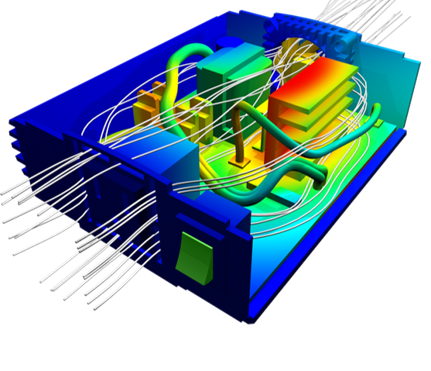
Conclusion
Vehicle aerodynamics is far more than just a matter of aesthetics; it’s a science that profoundly impacts how efficiently and smoothly a vehicle moves through the air. In an era where fuel efficiency, emissions reduction, and overall sustainability are paramount, the role of aerodynamics in automotive design cannot be overstated. From sleek, streamlined shapes to advanced technologies, the automotive industry continues to push the boundaries of aerodynamic innovation, creating vehicles that not only look futuristic but also drive with greater efficiency and performance. As we move towards a more sustainable future, vehicle aerodynamics will remain at the forefront of automotive engineering, shaping the next generation of vehicles and how we experience mobility.
Explore this link for a more extensive examination of the topic: Drag reduction by application of aerodynamic devices in a race car …
More links
If you’d like to dive deeper into this subject, there’s more to discover on this page: The Exquisite Combination: The aerodynamic design of IONIQ 5
